
In Japan there are lists for nearly anything you could think of. Some of the most famous lists are the 100 Famous Mountains, The Three Great Gardens of Japan, and the Three Views of Japan (also the Three Major Night Views of Japan). Other lists include the 100 Landscapes of Japan, 100 Soundscapes of Japan, and the many woodblock prints comprising famous series such as 36 Views of Mount Fuji from Hokusai, or the 53 Stations of the Tokaido by Hiroshige.
However, this time around we’ll be focusing on one of the many nature lists, namely the ‘Nihon no Taki, Hyakusen’, or 100 Waterfalls of Japan. This list was made by the Ministry of the Environment in 1990, and comprises waterfalls all over the country. Some are rather simple walks to beautiful vistas, while others require more dedicated hiking and trekking to reach. Let’s take a look at some of Japan’s most famous waterfalls!
Hokkaido: Ryusei and Ginga Falls
We start our adventure in the north in Hokkaido, the northernmost main island of Japan. In Japanese, ‘ryusei’ means shooting star or meteor, and ‘ginga’ means Milky Way, making the names of this waterfall pair Shooting Star and Milky Way Falls. Located in the Sounkyo Onsen area in Kamikawa, this pair of waterfalls cascades down from 90 metres and 120 metres respectively into the Ishikari River. There is an observation area that is a quick walk from a parking area that will let you see both waterfalls at the same time, and take in the beauty that made them part of the top 100 waterfalls in Japan. In autumn, the surrounding scenery comes alight with the changing leaves, framing the falls even more. You can access the waterfalls from JR Kamikawa station by taking a bus bound to Sounkyo, alighting at the last stop and transferring to a Lake Taisetsu bound service and getting off at Takimidai.
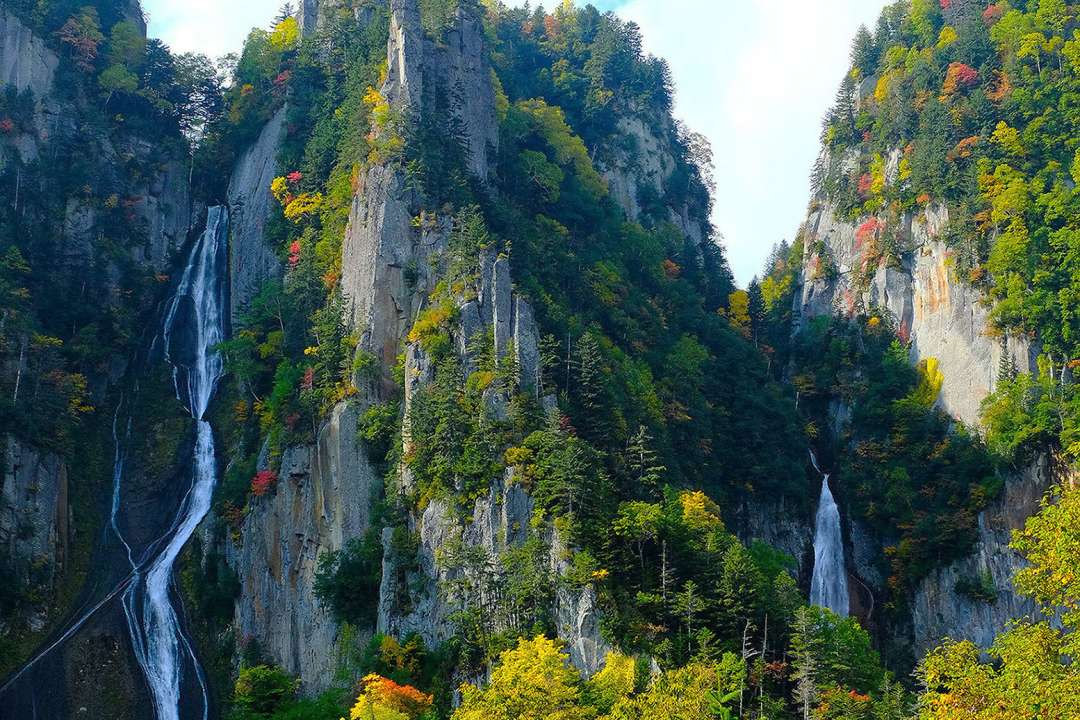
Akita: Yasu Falls
Heading down from Hokkaido to Honshu, we find ourselves in Kita-Akita, in Akita Prefecture. After a short car ride and a 45 minute hike, you come upon this two-tiered waterfall hidden in the mountains of Tohoku. The two tiers are 60 and 30 metres respectively, and at times you even have the chance to see a rainbow forming at the base of them. As the falls are located in the midst of forested mountains, autumn can make for one of the best times to visit the area. The falls will be surrounded by the vibrant colours of the changing seasons, while summertime will frame the plunging water with lush greenery. Once you arrive at the main lookout point, there is a smaller trail that can take you up to the upper falls area, where you can get an even better view of the area. While Yasu Falls might be a bit remote in the Akita hills, the trek to it is well worth it!
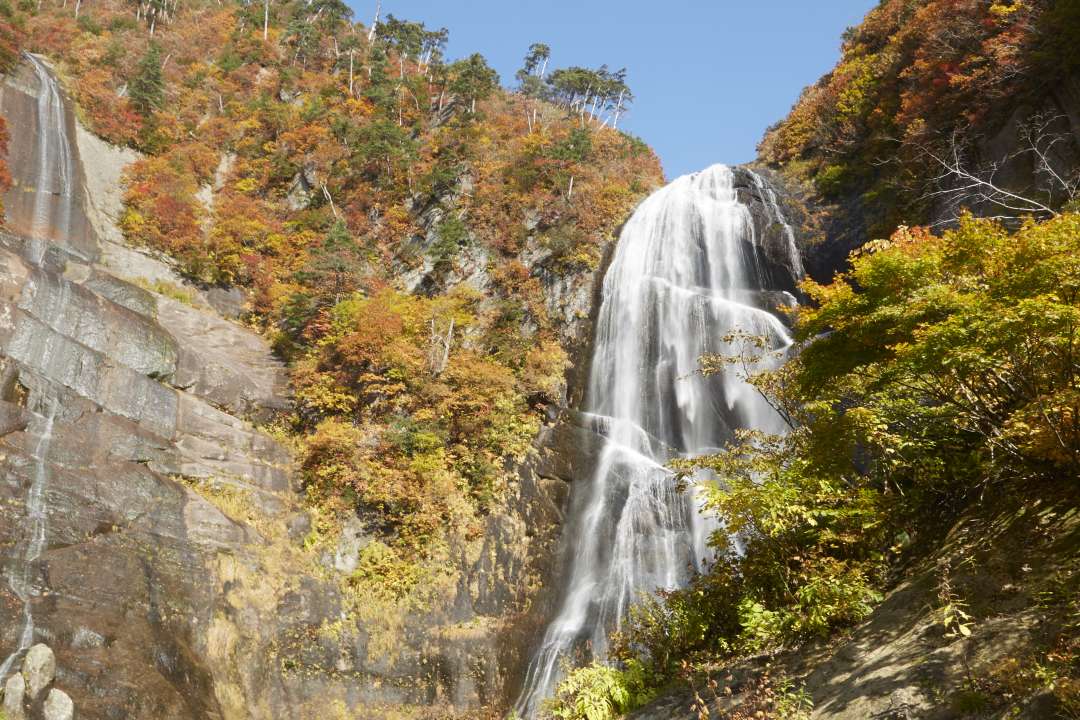
Shizuoka: Shiraito and Otodome Falls
Another pair of waterfalls, Shiraito and Otodome Falls, are located in Shizuoka Prefecture. Slightly more accessible than other waterfalls, you can reach them by a bus ride from nearby stations such as Shin-Fuji and Fujinomiya Stations. Shiraito Falls is characterised by its width, more than 150 metres wide, with countless streams of water cascading down the rock faces. From the viewpoint you can even see Mt. Fuji at times, making a stunning combination of the two. Nearby Shiraito Falls is Otodome Falls, reachable by a short walk. Otodome Falls includes a huge stream of water, thundering down its 25 metre drop into the Shiba River. The area around both Otodome and Shiraito Falls has multiple souvenir shops and great views, make sure to enjoy Mt. Fuji on your way to and from!

Wakayama: Kuwanoki Falls
Kuwakoki Falls in Wakayama Prefecture is next up on our list. In the area of Shingu, not too far away from the ever famous Nachi Falls and Kumano Nachi Taisha. Accessible by bus from JR Shingu Station, a short walk from where you get off the bus will see you arrive at the 21 metre waterfall in the Kuwanoki Canyon. As you walk through the forests, you’ll pass over a couple of bridges and by Oga Hachiman Shrine. Surrounded by mulberry trees which give the waterfall its name, its location in the forests of Wakayama make it a beautifully peaceful place to visit. Rain makes the water flow much more, making the scene even more breathtaking. If you are interested in exploring more of the Shingu area, you can rent a bike from the Shingu City Tourism Information Centre, and cycle along the Takada River, enjoying all the sights and sounds of Wakayama Prefecture.
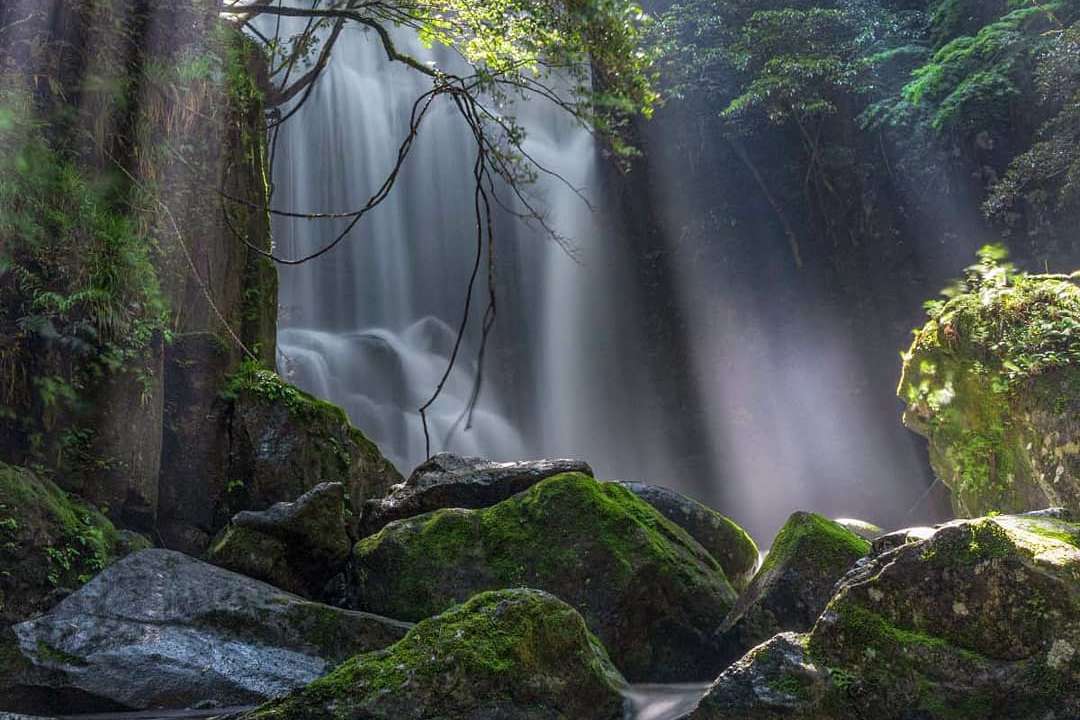
Oita: Higashishiiya Falls
Making our way to Kyushu, the southernmost of the main Japanese islands, we move to Higashishiiya Falls in Oita Prefecture. Found in the Usa area, slightly north of the capital city of Beppu, Higashishiiya Falls is an impressive 85 metre straight drop down, unlike some of the other tiered waterfalls previously covered. The waterfall is occasionally known as the ‘Kegon Falls of Kyushu’, as it resembles the famous Kegon Falls in Nikko, in Tochigi Prefecture. You can take a bus from Ajimu, getting off at Higashishiiya Entrance and walking for a short while to reach the waterfall. The stunning scenery of the surrounding area will make you want to stay forever.
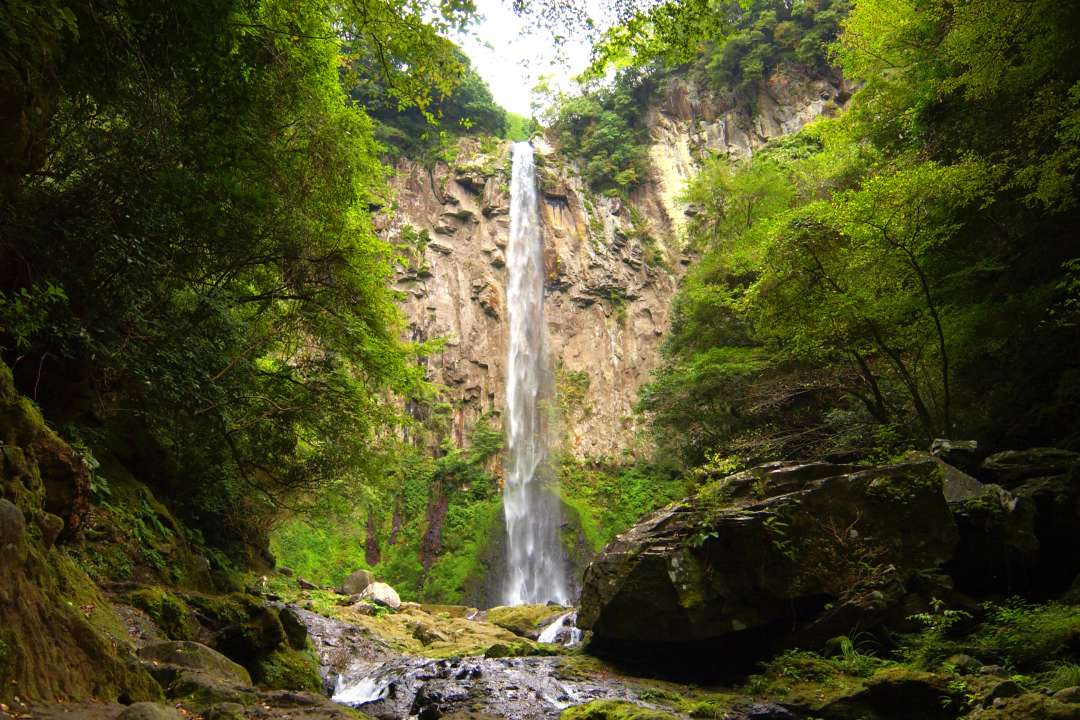
Miyazaki: Manai Falls
What might be one of the more well known waterfalls in Japan, Manai Falls can be found in the famous Takachiho Gorge in Miyazaki Prefecture. Cascading from the top of the volcanic gorge 17 metres into the Gokase River, this ethereal falls can be viewed from a variety of different spots. Above Takachiho Gorge there is a bridge that crosses the river, giving you a wide ranging view of the river below and the waterfall tumbling into the bright blue water. Perhaps one of the best ways to view the waterfall is to rent a boat, and paddle through the gorge yourself. You can get up close to all of the tumbling water surrounding you, and see the unique rock formations as well. From the Takachiho Bus Centre you can reach the gorge and the waterfall in a little over 30 minutes by foot. During the summertime, the area is also illuminated at night, making the experience even more breathtaking. Make sure to visit Takachiho Shrine during your visit, which was founded about 1,900 years ago!
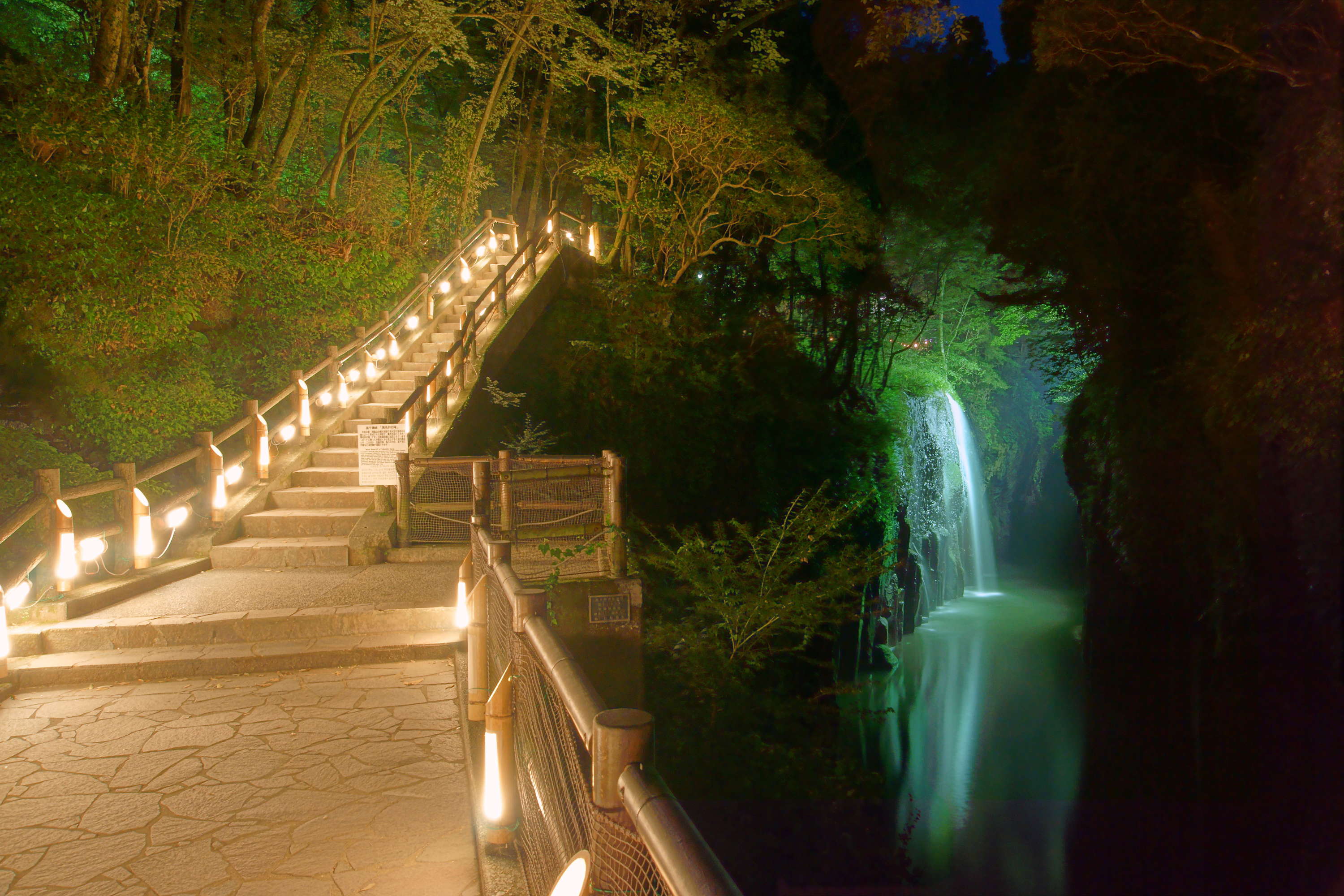
Kagoshima: Oko Falls
Wrapping up our waterfall adventure we finish at Oko Falls in Kagoshima Prefecture. However this waterfall isn’t actually on the main prefectural area, it is located on an island to the south known as Yakushima. Cascading 88 metres down near the coast of the island, Oko Falls can be reached by bus from Miyanoura Port. The falls are split into two distinct streams as they cascade down. Weather permitting, you can also get closer to the waterfall, and better feel its power and the spray coming off it. It may be perfect during a summer day to cool off. Nearby there is also Oko Springs, supposedly a spot with incredibly fresh and healthy drinking water. A visit to Yakushima is not complete with seeing the magnificence of Oko Falls!

We’ve only just scratched the surface of waterfalls in Japan, covering just 7 of the 100 in the 100 Waterfalls of Japan list. The remaining 93 are just as stunning, and scattered all around the country. If you are keen to complete this list, it is one way to fully experience the beautiful nature of Japan, but be sure to prepare your hiking boots!
To stay up to date with all the latest happenings in Japan follow us on Facebook or Instagram!

















































